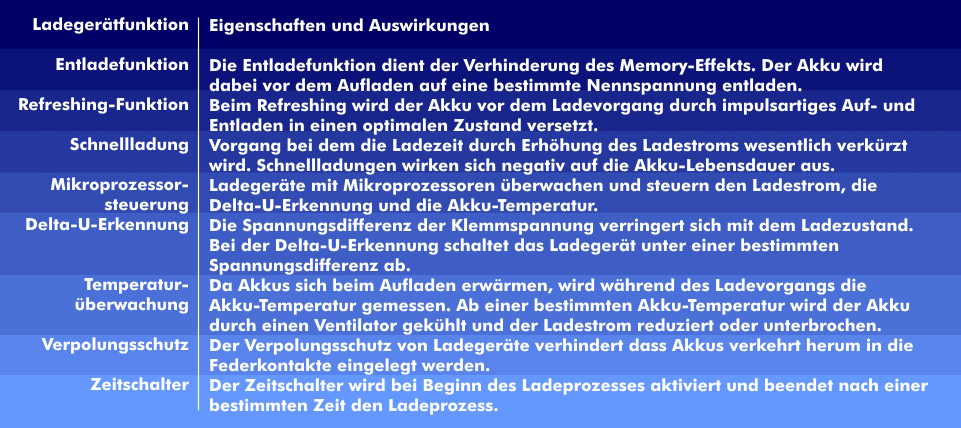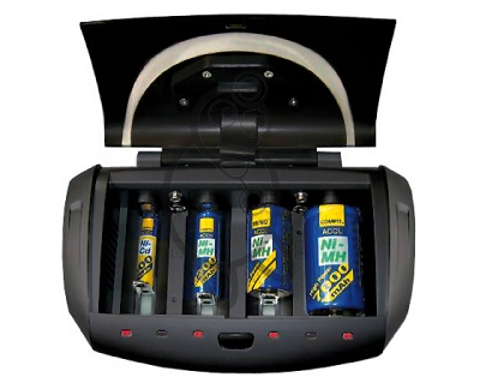battery charger
Battery-powered devices such as cell phones, smartphones, notebooks, netbooks or PDAs work with rechargeable batteries that have to be recharged after a certain discharge. For this purpose, there are AC adapters, chargers with connection terminals and battery chargers into which mobile devices or the batteries can be plugged for charging.
Chargers are more or less compact units that generate a charging DC voltage from the mains voltage or a DC voltage, such as that of car batteries. They consist of a transformer that transforms the mains voltage into a lower AC voltage. This is converted to a low DC voltage by a rectifier, smoothed in the downstream filter circuit and kept constant by a control circuit.
AC adapters contain device-specific chargers, whereby the mobile device to be charged is connected via a plug. Many manufacturers use their own plugs, contributing to the incompatibility of AC adapters. To prevent these plugincompatibilities, several well-known companies, under the auspices of the EU Commission, have established the Micro- USB plug as the charging plug for AC adapters for cell phones and have equipped their devices with this plug.
Charging method of chargers
For battery chargers, the charge current that can be drawn depends on the device batteries, as they have different charging conditions: NiCd batteries have different charging conditions than NiMH batteries or lithium-ion batteries. The different charging conditions include charging current and charging time, also some batteries should be charged with constant current, others should be charged intermittently. Overcharging should be avoided at all costs, as it causes overheating, which significantly shortens battery life.
In addition to simple battery chargers that provide a constant charging current, there are electronic chargers equipped with control circuits and, in addition, intelligent, microprocessor chargers, the Smart Battery Chargers( SBC). Chargers work with a wide variety of charging methods. They are controlled by electronic regulation circuits and battery management systems and can charge the batteries with constant current - constant current charging method - or constant voltage - constant voltage charging method.
There are also combined charging methods that start with constant current and then switch to constant voltage, such as the IU charging method. They detect the state of charge so that they prevent overcharging and overheating. Overcharging can be prevented by limiting the charging time, continuously monitoring the charging voltage, charging current and battery temperature. With charge voltage monitoring, the charge current is interrupted when the change in charge voltage, the delta-U, falls below a certain value. Other chargers work with defined charging curves for the current and the charging voltage, and still others discharge the batteries before each new charging cycle.
In addition to wired charging, there are also systems for wireless power transfer. Charging mats, known as Powermat or Power-Pad, which are based on inductive coupling, and Airnergy, a radio-based energy transmission, are available for this purpose.



